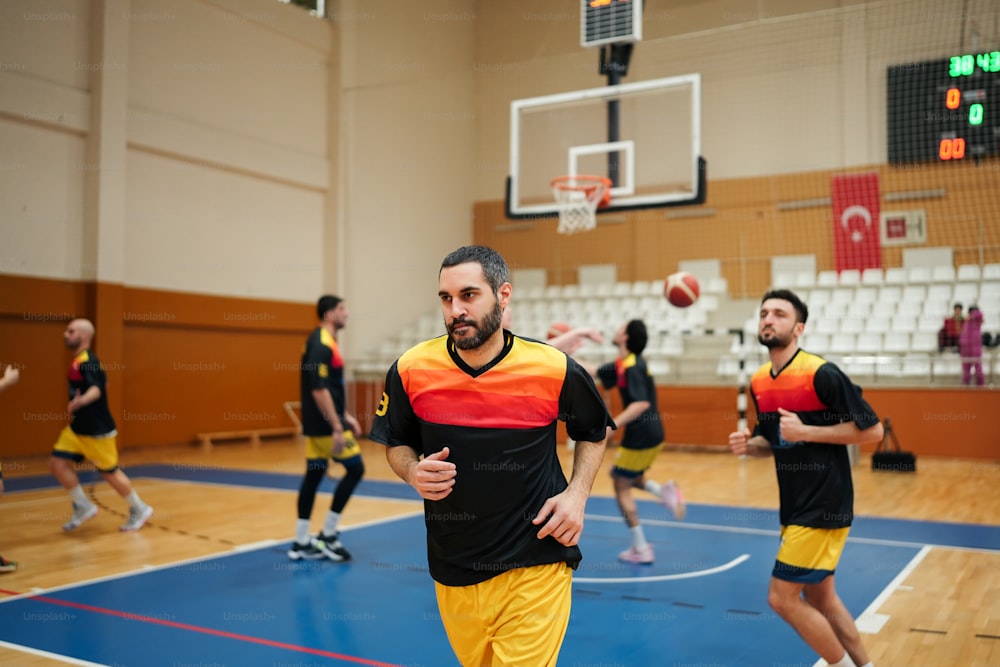Sports News and Entertainment
In a world where the pace of life is ever-increasing, the intersection of sports news and entertainment has become a captivating arena that keeps millions of enthusiasts on the edge of their seats. This dynamic blend not only showcases the prowess of athletes but also immerses fans in a thrilling experience that goes beyond the scoreboard. From the adrenaline-pumping moments on the field to the electrifying performances off it, the amalgamation of sports and entertainment has evolved into a cultural phenomenon that resonates globally.
The Pulse of the Field:
Image via Unsplash.com
At the heart of the synergy between sports and entertainment lies the pulsating energy of the sporting events themselves. Whether it’s the roar of the crowd in a packed stadium or the nail-biting tension during a crucial match, sports provide a raw and unfiltered emotional experience. The active voice in sports reporting amplifies the immediacy of these moments, making the audience feel like they are right there in the midst of the action.
Take, for instance, the realm of football, where every goal, every tackle, and every save sends shockwaves through the hearts of fans. A sports journalist employing an active voice might describe a last-minute goal as “striking the net with precision” or a game-changing interception as a “dazzling display of defensive mastery.” This style of reporting not only captures the essence of the moment but also injects a sense of urgency and excitement into the narrative.
Beyond the Stats: Sports and Entertainment
While the statistics of a game may provide a numerical snapshot of performance, it is the active voice in sports reporting that breathes life into the stories behind the numbers. Instead of a passive recitation of scores and figures, active voice allows journalists to craft narratives that explore the human drama, resilience, and triumphs that unfold on the field.
For example, an active voice approach could transform a simple record-breaking run into a captivating tale of determination and grit. “The athlete surged past the finish line, shattering previous records and etching their name in the annals of history” paints a vivid picture, allowing readers to feel the intensity of the moment and the significance of the achievement.
Entertainment Extravaganza:
Image via Unsplash.com
Beyond the field, the realm of sports entertainment takes center stage, offering a diverse array of performances that captivate audiences worldwide. Music, dance, and dazzling light shows come together to create a spectacle that goes hand in hand with the athletic prowess on display. The active voice in entertainment reporting serves as a powerful tool to convey the vivacity and spectacle of these events.
Consider the halftime show of a major sporting event, where a megastar takes the stage to deliver a show-stopping performance. An active voice narrative might describe the artist as “commanding the stage with electrifying charisma”. And the audience as “immersed in a sea of lights and pulsating beats.” This approach not only reports the events but also transports the reader into the heart of the entertainment experience.
The Global Stage: Sports and Entertainment
In an era of connectivity, sports news and entertainment have transcended geographical boundaries. It creates a global stage where cultures collide and unite. The active voice in reporting becomes a universal language that resonates with audiences from diverse backgrounds. It fosters a sense of shared excitement and enthusiasm.
For instance, the coverage of an international sporting event using an active voice might depict the clash of titans as a “cultural confluence of athleticism. And sportsmanship” and the celebration of victories as a “symphony of jubilation echoing across continents.” This approach not only celebrates the diversity of the sports world. But also underscores the common thread that binds fans worldwide.
The Rise of Athlete Personalities:

Image via Pexels.com
In the age of social media and personal branding, athletes have become more than just sports icons. They are influencers and entertainers in their own right. The active voice in sports reporting plays a crucial role in bringing forth the personalities, stories, and struggles of these athletes. It turns them into relatable figures with whom fans can connect on a personal level.
An active voice narrative might delve into an athlete’s journey. It describes their triumphs as “defying the odds” and setbacks as “fuel for a relentless comeback.” Humanizing athletes and emphasizing their unique narratives is formative. By this sports reporting in the active voice transforms these figures into larger-than-life characters. It contributes to the ever-expanding intersection of sports and entertainment.
The Evolution of Sports Journalism:
As the landscape of sports news and entertainment continues to evolve, so does the role of sports journalism. The active voice, with its immediacy and engagement, has become a linchpin in this evolution. It is shaping the way stories are told and experiences are conveyed to audiences. The traditional approach of detached observation has given way to a more immersive and participatory style. It aligns with the fast-paced, interactive nature of modern media consumption.
This evolution is evident not only in written journalism but also in the realm of broadcast and digital media. Commentators and hosts now infuse their coverage with an active voice. It offers real-time analysis, passionate commentary, and a personal connection with the audience. This shift has not only made sports reporting more compelling. But has also opened new avenues for fan engagement and interaction.
The Marriage of Sports and Music:

Image via Pexels.com
One of the most impactful collaborations between sports and entertainment is the seamless integration of music into the sporting experience. Anthems that reverberate through stadiums or chart-topping hits that accompany highlight reels. The synergy between sports and music creates an audiovisual spectacle that resonates with fans on a visceral level.
An active voice narrative might describe the marriage of sports and music as a “symphony of emotions. It is a space where beats synchronize with the heartbeat of the game.” From iconic walkout songs to halftime performances, the integration of music enhances the entertainment quotient of sporting events. It creates memorable moments that linger in the collective consciousness of fans.
Conclusion: Sports and Entertainment
In the grand tapestry of human experience, the fusion of sports news and entertainment emerges as a vibrant and dynamic thread. It weaves its way through cultures, continents, and communities. The active voice in reporting serves as a powerful catalyst. It propels stories beyond mere facts and figures, and into the realm of visceral experiences that resonate with audiences globally.






